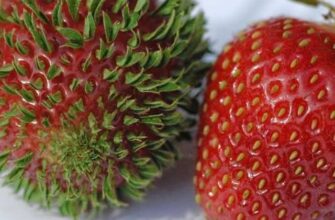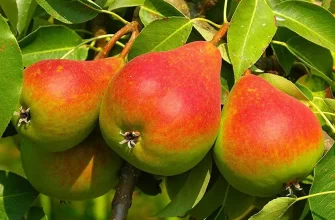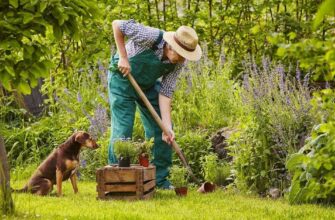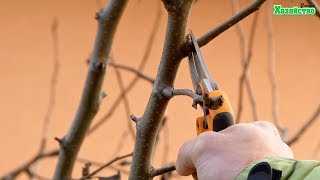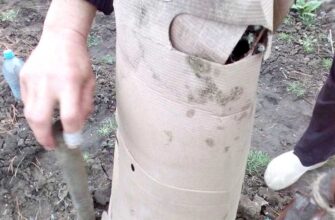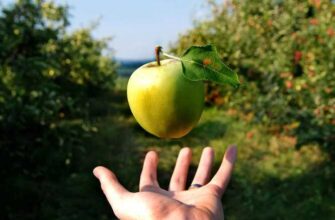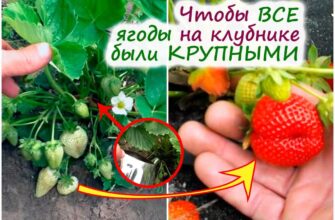- Хитрый способ обрезки ремонтантной малины
- Увеличение размера ягод ремонтантной малины
- Обрезка ремонтантной малины
- Способ увеличения размера ягод
- Выбор оптимального времени для обрезки
- Подготовка растения к обрезке
- Правильная техника обрезки
- Удаление слабых и поврежденных побегов
- Обрезка верхушек побегов для стимуляции роста
- Создание оптимальной формы куста
- Профилактика заболеваний и вредителей
- Правила обработки растений
- Применение средств защиты
- Уход после обрезки
- Результаты и секреты успешной обрезки
- Вопрос-ответ:
- Как правильно обрезать ремонтантную малину?
- Какой эффект можно достичь обрезкой ремонтантной малины?
- Когда лучше всего обрезать ремонтантную малину?
- Какие инструменты лучше всего использовать для обрезки ремонтантной малины?
- Можно ли обрезать ремонтантную малину в другое время года?
- Видео:
- Как обрезать ремонтантную малину. Сайт «Садовый мир»
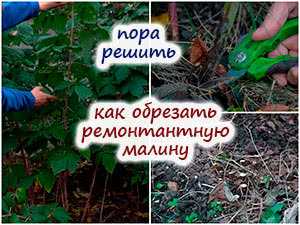
Обрезка ремонтантной малины – важный аспект заботы о растении, который помогает увеличить размер ягод и повысить их качество. Ремонтантная малина отличается от обычной тем, что способна плодоносить как на побегах текущего года, так и на побегах прошлого года. Это позволяет получить две урожайные волны – весной и осенью. Однако, чтобы ягоды были крупными и сочными, необходимо знать правильный способ обрезки.
Первый шаг – удаление старых побегов, на которых уже прошел урожай. Это позволит растению сосредоточиться на формировании новых побегов, которые будут давать крупные ягоды. Второй шаг – обрезка молодых побегов, чтобы они не конкурировали с основными побегами. Это сделает ягоды крупнее, так как растение будет тратить энергию только на формирование основных побегов.
Третий шаг – укорачивание основных побегов. Это позволит растению затратить энергию на развитие ягод, а не на рост листвы и побегов. В результате ягоды будут крупными и сочными. Но, важно помнить, что обрезка ремонтантной малины необходима только весной, до начала активного роста растения. После основного обрезания, растение нужно подкармливать органическими удобрениями, чтобы обеспечить ему необходимые питательные вещества для формирования крупных ягод.
Хитрый способ обрезки ремонтантной малины
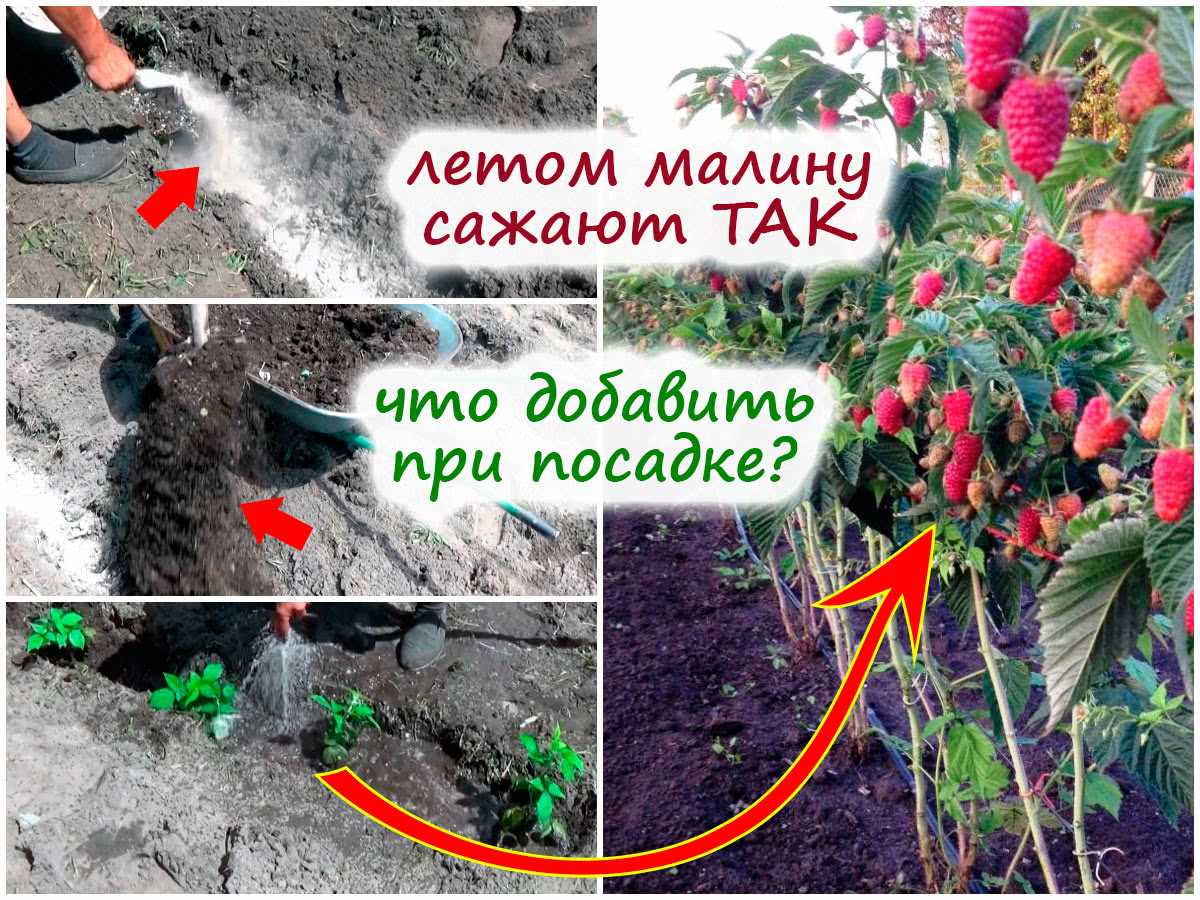
Обрезка ремонтантной малины является важной частью ухода за растением, позволяющей увеличить размер ягод и улучшить их качество. Существует различные способы обрезки, но один из наиболее эффективных — это использование метода крупными группами.
Этот способ заключается в том, чтобы обрезать малину в виде крупных групп, оставляя только одну или две основные стебли. Такой подход позволяет растению сконцентрировать свою энергию на развитии и увеличении размера ягод, так как при удалении лишних стеблей растение не тратит силы на их поддержание и рост.
Обрезка малины по этому способу также способствует улучшению вентиляции и освещения растения, что благотворно влияет на его рост и развитие. Кроме того, удаление лишних побегов и стеблей позволяет предотвратить заражение растения различными болезнями и вредителями.
Важно помнить, что обрезка ремонтантной малины должна проводиться в определенное время года. Оптимальное время для обрезки — период после окончания плодоношения, когда растение находится в состоянии покоя. Такой подход позволит достичь наилучших результатов и сделать растение готовым к новому сезону.
Увеличение размера ягод ремонтантной малины
Обрезка ремонтантной малины
Один из способов увеличить размер ягод ремонтантной малины – правильная обрезка растения. Она позволяет сосредоточить питательные вещества на развитие ягод, что положительно сказывается на их размере и вкусе.
Для обрезки малины следует использовать острое садовое орудие или секатор. Удалять нужно старые побеги и побеги, на которых уже плодоносились ягоды. Это позволит растению направить энергию на развитие новых побегов и увеличение размера ягод.
Способ увеличения размера ягод

Другим способом увеличить размер ягод ремонтантной малины является удобрение. Регулярное внесение органических и минеральных удобрений позволяет обеспечить растение всеми необходимыми питательными веществами для развития крупных и сочных ягод.
Также важно поддерживать оптимальный уровень влажности и обеспечить растение доступом к солнечному свету. Полив и регулярное удаление сорняков помогут малине получить достаточное количество влаги и света, что положительно скажется на размере ягод.
Следуя этим простым рекомендациям, ягоды ремонтантной малины будут крупными и сочными, радуя своим вкусом и увеличивая урожайность растения.
Выбор оптимального времени для обрезки
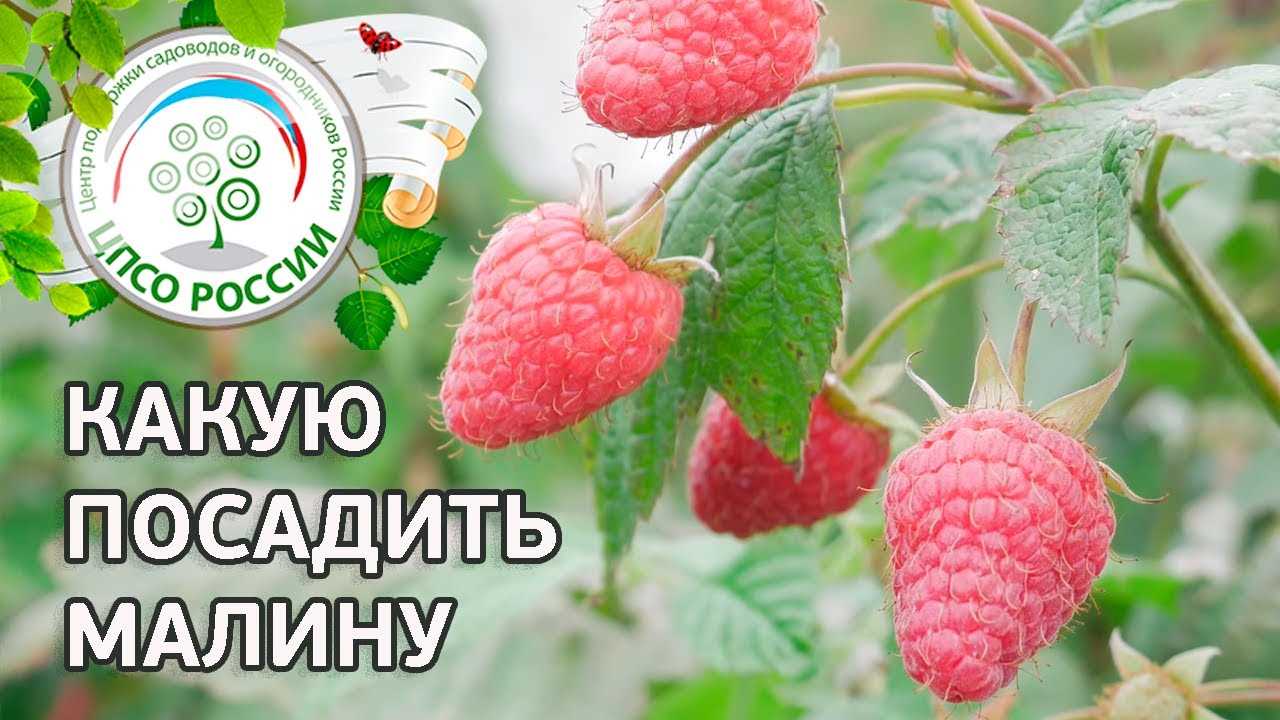
Обрезка ремонтантной малины способствует увеличению размера ягод и повышению урожайности. Однако, чтобы достичь максимальных результатов, необходимо обрезать растение в оптимальное время.
Весна
Наилучшим временем для обрезки ремонтантной малины является весна. Когда снег уже растаял, а почва прогрелась, можно приступать к обрезке. В это время растение еще не активно начало рост, поэтому обрезка не повредит растению.
Осень
Также осенью можно провести обрезку ремонтантной малины. В это время растение уже завершило плодоношение и подготавливается к зиме. Обрезка в осенний период позволяет удалить старые и поврежденные побеги, что способствует лучшему восстановлению растения в следующем сезоне.
Важно помнить, что обрезка ремонтантной малины необходима для удаления старых побегов и формирования новых, более крупных и здоровых. Не бойтесь обрезать растение, оно отрастет и принесет вам обильный урожай крупных и сочных ягод!
Подготовка растения к обрезке

Секрет увеличения размера ягод малины заключается в правильной подготовке растения к обрезке. Начать следует с выбора подходящего места для малинового куста. Малина предпочитает солнечные места с хорошей воздухообменностью и плодородными почвами. Перед обрезкой необходимо обеспечить растению достаточное количество света и питательных веществ, чтобы ягоды стали крупными и сочными.
Кроме того, перед обрезкой малины необходимо удалить все побеги, которые не будут участвовать в формировании будущего урожая. Рекомендуется оставить примерно 5-7 сильных побегов, которые будут обеспечивать растению достаточное количество питательных веществ для развития ягод. Этот способ обрезки позволит малине сконцентрировать свои силы на развитии ягод, делая их крупными и сочными.
Также важно осуществлять обрезку малины в определенное время года. Рекомендуется проводить обрезку растений весной или осенью, когда они находятся в покое и не развиваются активно. В это время растение легче переносит обрезку и может быстрее восстановиться после нее, что положительно сказывается на размере и качестве ягод.
Правильная техника обрезки
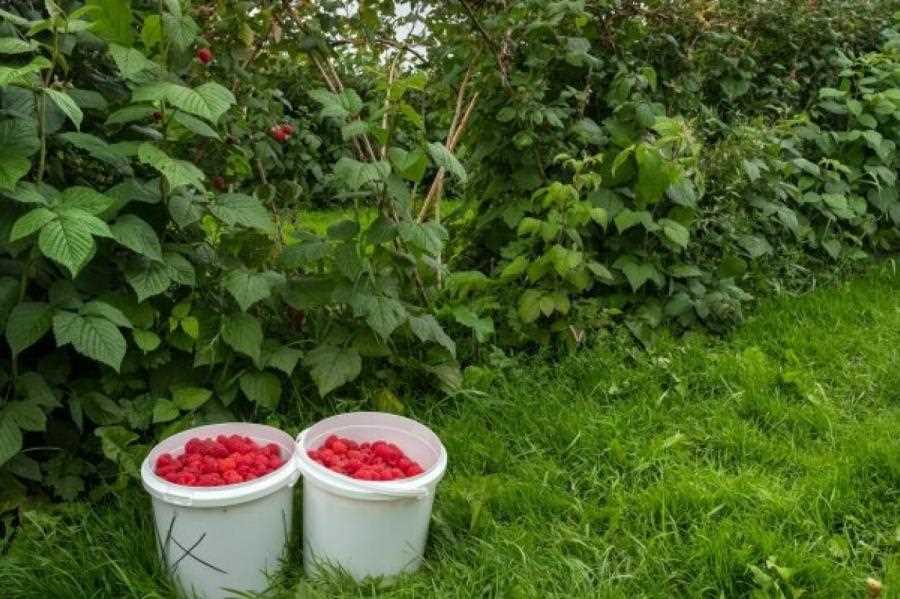
Для достижения крупных ягод ремонтантной малины необходимо использовать правильную технику обрезки. Одним из самых эффективных способов является удаление боковых побегов растения.
При обрезке следует оставлять только несколько наиболее сильных стеблей, которые будут обеспечивать хорошее питание и развитие ягод. Удалять следует слабые побеги, чтобы они не конкурировали за питательные вещества и не забирали энергию у основных стеблей.
Также важно правильно обрезать верхушку стебля. При правильной обрезке стебля, малина будет активно развиваться в ширину, образуя побеги с крупными ягодами. При этом необходимо обрезать стебли на определенной высоте, чтобы сохранить нужный баланс между ростом и развитием малины.
Важно помнить, что обрезка малины должна проводиться в определенное время года. Лучше всего обрезку проводить весной, перед началом активного роста растения. Такой подход позволит достичь наилучших результатов и получить обильный урожай крупных ягод ремонтантной малины.
Удаление слабых и поврежденных побегов

Так стоп!!! Вы всё ещё не подписаны на наши каналы в Телеграмм и Дзен? Посмотрите: ТГ - (@historyfantasydetectivechat) и Дзен (https://dzen.ru/myshortsstorys)
Еще одним важным шагом в методе обрезки ремонтантной малины является удаление слабых и поврежденных побегов. Это способствует улучшению роста и развития растения, а также повышает качество ягод.
При обрезке ремонтантной малины следует обратить внимание на побеги, которые выглядят слабыми или поврежденными. Они могут быть меньше по размеру или иметь поврежденные листья или стебли. Такие побеги не будут способствовать обильному плодоношению и могут забирать питательные вещества у сильных и здоровых побегов.
Для удаления слабых и поврежденных побегов рекомендуется использовать остро заточенные секаторы или ножницы. Осторожно обрежьте побеги недалеко от основания растения, чтобы не повредить оставшиеся здоровые побеги. Не забудьте утилизировать удаленные побеги, чтобы предотвратить распространение болезней и вредителей.
Обрезка верхушек побегов для стимуляции роста
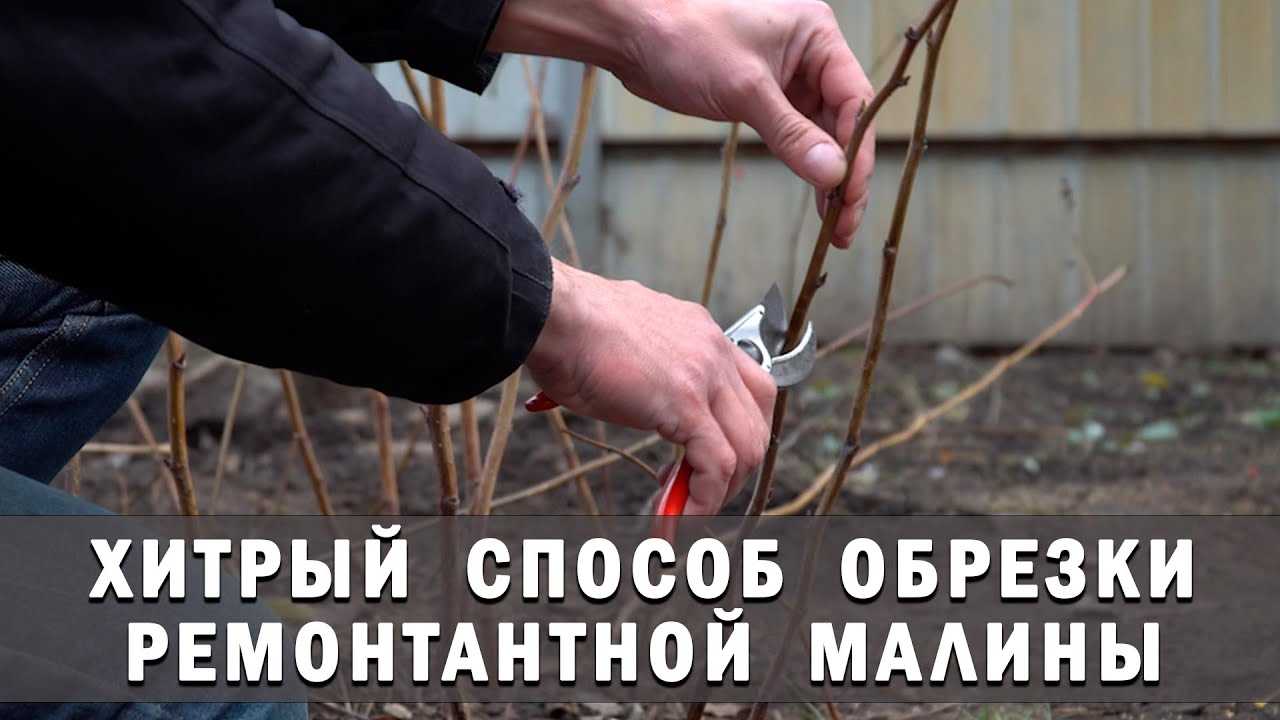
Один из эффективных способов увеличить размер ягод ремонтантной малины — это обрезка верхушек побегов. Этот метод позволяет добиться более крупных и сочных плодов.
При обрезке верхушек побегов у ремонтантной малины происходит стимуляция роста боковых побегов. Таким образом, растение начинает активно развиваться в ширину, образуя больше побегов и листьев, что благоприятно сказывается на качестве ягод.
Обрезка верхушек побегов проводится в начале сезона роста, когда побеги достигают высоты около 30 сантиметров. Для этого нужно срезать верхушку побега на высоте около 10-15 сантиметров. Таким образом, стимулируется рост боковых побегов, которые будут давать больше плодоношений и крупных ягод.
Важно помнить, что обрезка верхушек побегов ремонтантной малины является только одним из методов увеличения размера ягод. Помимо этого, необходимо также обеспечить малине необходимые условия для роста и развития, такие как достаточное питание, полив, уход за почвой и защиту от вредителей.
Создание оптимальной формы куста
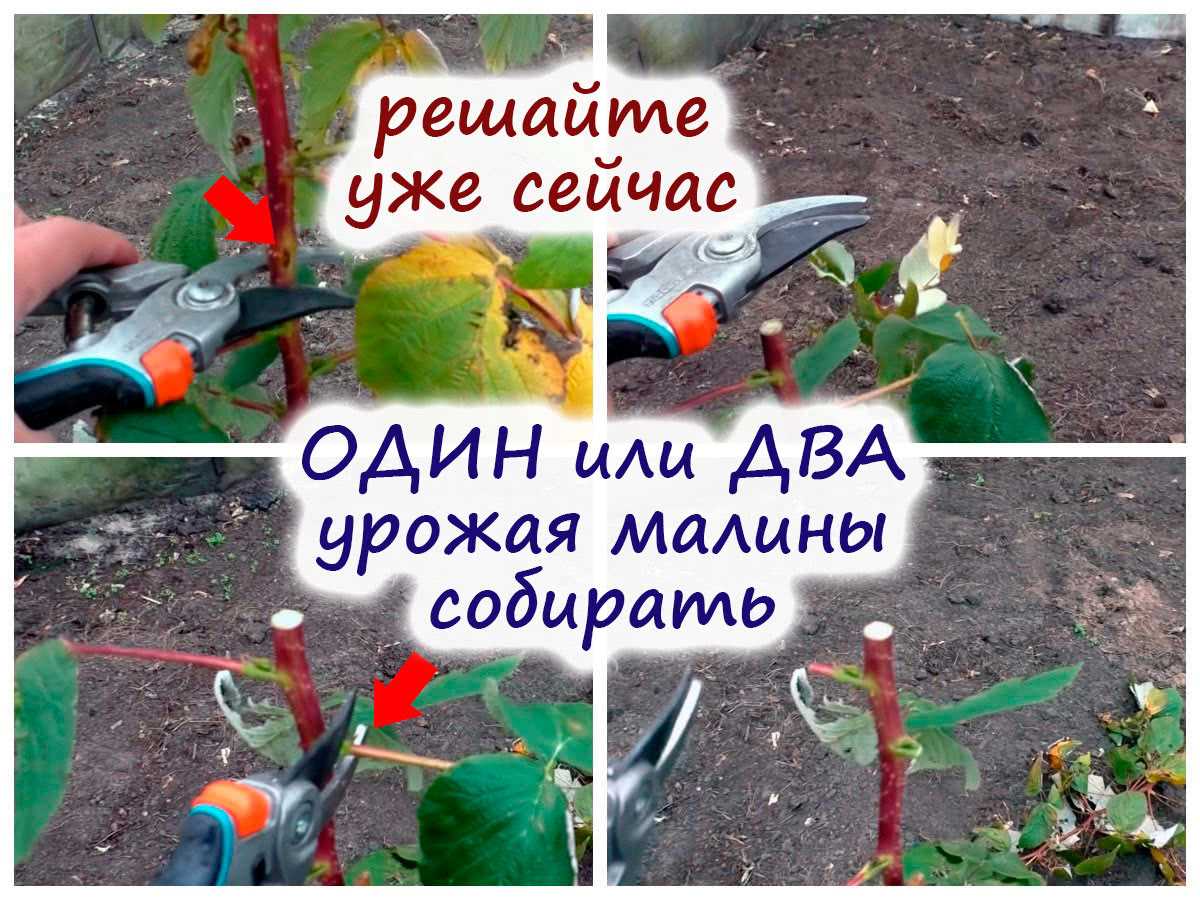
Оптимальная форма куста ремонтантной малины играет важную роль в увеличении размера ягоды и повышении ее качества. Существуют различные способы обрезки, которые позволяют создать такую форму и получить крупные и сладкие ягоды.
Один из эффективных способов — это обрезка стеблей до определенной высоты. Подобный метод позволяет кусту малины сконцентрировать свои силы на развитии главных побегов, которые будут давать большие и сочные ягоды.
Также важно следить за укоренением побегов и удалением лишних побегов, чтобы куст был компактным и все его силы направлялись на развитие плодов. Регулярная обрезка позволит создать оптимальную форму куста и обеспечить достаточное количество питательных веществ для ягод.
Профилактика заболеваний и вредителей
Одним из ключевых аспектов успешного выращивания ремонтантной малины является правильная профилактика заболеваний и защита от вредителей. Стратегия, направленная на поддержание здоровья растений, поможет не только получить обильный урожай крупных ягод, но и сохранить их качество.
Правила обработки растений

Одним из первых шагов в профилактике заболеваний и вредителей является правильная обрезка малины. Удаление старых и поврежденных побегов позволяет улучшить циркуляцию воздуха и освободить место для новых, здоровых побегов. Этот способ не только предотвращает распространение возбудителей болезней, но и способствует образованию крупных ягод.
Применение средств защиты
Для профилактики и контроля за заболеваниями и вредителями рекомендуется использовать специальные препараты. Нанесение фунгицидов и инсектицидов помогает предотвратить появление грибковых и насекомых паразитов, которые могут негативно сказаться на развитии и урожайности малины.
Важно помнить, что применение химических средств защиты должно производиться в соответствии с инструкцией производителя и с учетом сроков обработки. Регулярное применение препаратов позволяет предупредить заболевания и защитить малину от вредителей, а следование рекомендациям поможет сохранить урожай ягод крупными и вкусными.
Уход после обрезки

После проведения обрезки ремонтантной малины, необходимо обеспечить ей правильный уход, чтобы получить крупные и сочные ягоды. Во-первых, следует обратить внимание на полив растения. После обрезки малины, лучше увеличить количество поливов, особенно в период цветения и созревания плодов. Это позволит ягодам развиваться и наливаться влагой, а также предотвратить появление сухости и слабого роста.
Во-вторых, рекомендуется обеспечить малине подкормку. После обрезки, растение тратит много энергии на восстановление и рост новых побегов. Для того чтобы малина не истощалась и имела достаточно питательных веществ, ее необходимо подкармливать. Лучше всего использовать органические удобрения, такие как перегноя или компост. Они обогатят почву полезными элементами и помогут малине развиваться и увеличивать размер ягод.
В-третьих, следует проводить регулярную обработку от вредителей и болезней. После обрезки малины, растение может быть более уязвимым для атак вредителей и инфекций. Чтобы предотвратить это, рекомендуется проводить обработку специальными препаратами. Они помогут сохранить растение здоровым и защитят его от различных вредоносных организмов.
В целом, правильный уход после обрезки ремонтантной малины является важным условием для получения крупных и вкусных ягод. Полив, подкормка и обработка от вредителей помогут растению развиваться и давать хороший урожай. Следуя этим рекомендациям, можно получить отличные результаты и насладиться вкусными плодами малины.
Результаты и секреты успешной обрезки

Правильный способ обрезки ремонтантной малины может привести к впечатляющим результатам. Одним из главных секретов успешной обрезки является особое внимание, уделяемое правильному времени и способу обрезки.
Чтобы получить крупные ягоды, следует проводить обрезку в определенное время года. Весенняя обрезка, проводимая в марте или апреле, поможет активизировать рост малины и способствует формированию больших ягод. Важно помнить, что обрезка должна быть проведена до начала активного роста растения.
Для достижения желаемого результата также необходимо правильно обращаться с побегами. Один из секретов заключается в том, чтобы оставлять на каждом побеге по 4-6 почек. Это позволит малине развиваться и давать более крупные ягоды. Также рекомендуется удалять слабые и поврежденные побеги, чтобы сосредоточить растение на развитии сильных и здоровых.
Еще одним важным аспектом успешной обрезки является подкормка и полив растений. Регулярный полив и внесение удобрений, богатых азотом, помогут малине расти здоровой и увеличивать размер ягод. Все эти меры, вместе со способом обрезки, создадут оптимальные условия для получения крупных и сочных ягод ремонтантной малины.
Вопрос-ответ:
Как правильно обрезать ремонтантную малину?
Для обрезки ремонтантной малины нужно удалить все побеги, которые плодоносили в текущем году. Оставить нужно только побеги, которые появились в этом году и будут плодоносить в следующем сезоне.
Какой эффект можно достичь обрезкой ремонтантной малины?
Обрезка ремонтантной малины позволяет увеличить размер ягод и улучшить их качество. Благодаря правильной обрезке у растения остается меньше побегов, что позволяет силам растения сосредоточиться на развитии оставшихся ягод и увеличить их размер.
Когда лучше всего обрезать ремонтантную малину?
Ремонтантную малину лучше обрезать весной перед началом активного роста. Таким образом, растение будет иметь достаточно времени для восстановления и развития новых побегов перед началом плодоношения.
Какие инструменты лучше всего использовать для обрезки ремонтантной малины?
Для обрезки ремонтантной малины можно использовать секатор с острыми лезвиями. Острое лезвие позволит сделать чистый и ровный срез, что способствует быстрому заживлению ран на растении.
Можно ли обрезать ремонтантную малину в другое время года?
Хотя основное время обрезки ремонтантной малины приходится на весну, ее можно обрезать и в другое время года, например, осенью. Однако в этом случае следует быть осторожным, чтобы не повредить растение и не нарушить его режим покоя.

